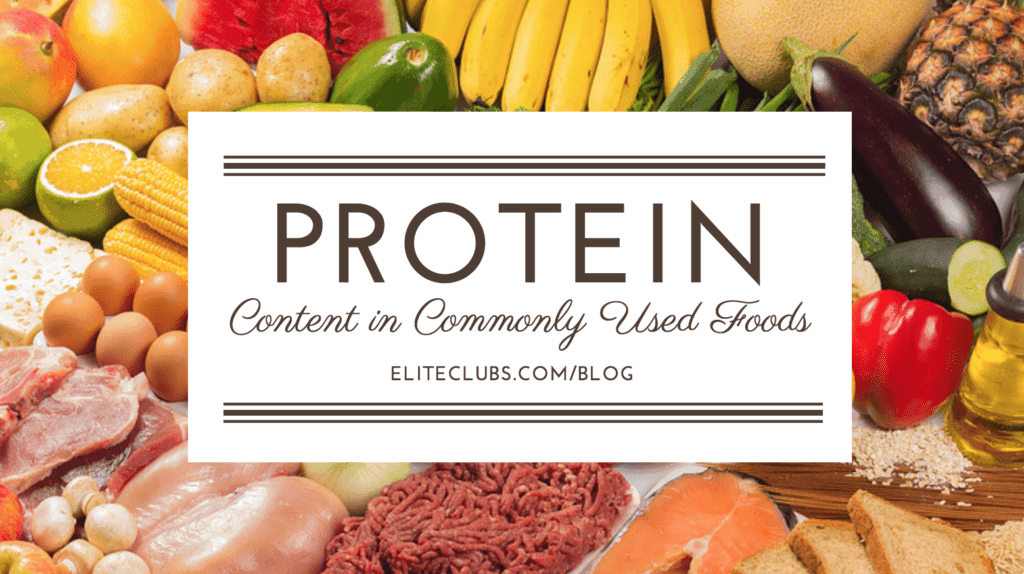
Most people have no idea how much protein they are eating until they try to increase it to improve their diet or to enhance workout potential. If you would like to do this for yourself, here is an easy list to use for those calculations.
Sources & Amount of Protein per serving:
Fruit — contains no protein
Fats — contains no protein as well
Vegetables — contain some and are important sources based upon the amount of vegetable based protein you would like to have. For an average, you can estimate about 3 grams Protein for every serving, as:
- 1-cup raw leafy vegetable*
- ½-cup other cooked vegetable*
- ¾-cup vegetable juice*
Grains — as all breads and cereals would be a fairly standard 5 g Protein:
- 1-slice bread*
- 1-cup ready to eat cereal*
- ½-cup cooked cereal*
- ½-cup mashed potatoes or rice
Dairy — these will vary slightly, but for most part these foods will add a great deal of protein to your diet. For example:
- 1-cup milk, with any fat content: 8 g
- 4-oz yogurt, any kind with or without fruit added: 11 g
- 1.5 oz. natural cheese: 10 g
Meat — the focus of most meals, is also the majority of our protein totals for the day. Look at these levels:
- 1-oz cooked meat: 7 g
- 1-oz cooked fish: 7 g
- 1-large egg: 7 g
- 1-Tbsp Peanut butter: 4 g*
- 2.5- oz soy burger: 11 g*
- ⅓-cup dry roasted peanut: 7 g*
- ½-cup cooked beans, from dry: 8 g*
So, when you’re planning your meals for the week make sure you are looking for the best, most high quality protein. You’ll usually look for it to be about 10-35% of calories in your diet with an average of 25%. At the same time, the Dietary Guidelines for Americans for Fat is 20-35% of total calories with an average of 30%, and the proportion for Carbohydrate is 45-65% with an average of 55%. The content and level of your nutrients will be completely up to you, and can be decided upon as it relates to your fitness goals.
No dietary supplement products were added to this article.
*All vegetable sources of Protein
Written by Rita Larsen, RDN, CD; Elite Sports Clubs Nutrition Educator & Diet Counselor
Rita is certified in Positive Psychology, University of Penn; has a BS in Dietetics from Kansas State University; and an Internship and Masters at the Indiana University Medical Center.
Schedule a Nutrition Consultation